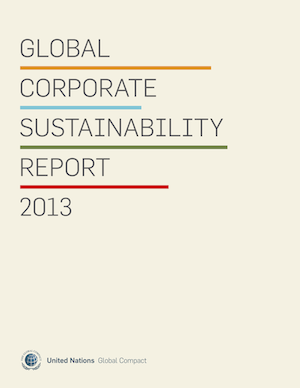The healthcare industry's social responsibility goes beyond just workplace and supply chain issues; it's about its impact on society and what its real goals are. Trials and prevention efforts often overlook certain groups. Politics and money regularly determine who gets treated, in function of political agendas in some jurisdictions. And: Using the GDP to measure health isn't necessarily helpful as it incentives fixing problems rather then preventing them early on.
Over the last couple of years a plethora of pledges has arisen in the sustainability/ESG space.
The weird thing: Pledges intend to drive change the wrong way around. Commit people (read: companies) publicly, then hope they will actually move in accordance to the pledge/commitment, and then only hold them to account if and when they do not delivery. If anyone remembers that is.
Do we need all these pledges? Do they really make a difference?
Data says: probably not ...
Shouldn't hence the Lemma simply be:
Actions before words.
Impact before messaging.
Walk before talk.
Science before marketing.
Many of the most important resources our current civilisation depends on – all of them finite natural resources - form part of what historically would have been called ‘The Commons’. And yet, many of them are economically treated as 'income' and not the valuable and finite 'assets' they are. That again is the tragedy of the commons.
The supply chain.
It has been accepted a long-time ago: supply chain is a risk. Or better: a RISK in capital letters.
But also a word that sounds impersonal. Very akin to a factory being a cogwheel in a much larger clockwork. And while the definition of the term does list ‘people’, the focus is very clearly on the idea of it all being a neat system of seamless interactions.
Unless the top line of company executives are held accountable for and judged by their contribution to the company’s risk management and mitigation efforts, including importantly CSR and sustainability performance, the company will struggle. Without senior commitment and engagement, the system only ever allows for minor ‘bug fixes’.
The more time I spend ‘doing sustainability’, i.e. being involved both as a professional as well as as an individual in cajoling, motivating, convincing and helping companies – and the individuals therein - to become ‘better citizens’, the more I realised that … actually, in would not be that hard to do better.
Or let me reformulate more accurately: it is equally hard as many other things in businesses.
In a recent blog post, we referred specifically to ‘eco’ labels that you may find on an outdoor product – or its hang-tag. Of course the key question is: what labels that you may encounter when shopping for alpine kit, are (reasonably) trustworthy?
Here an overview.
The quality of governance is one of the key ingredients why projects, companies, and even governments fail in their tasks. It is also the key ingredient to achieve results, buy-in and participation. It is for this very reason that good governance was seen early on as one of the fundamental success factors for the Social Labor Convergence Project (SLCP).
Barcodes, RFID tags, and QR codes have each introduced a new era of on-product information distribution and acquisition.
In this article I would like to look at a family of digital solution components that many brands and manufacturers will already use and be reliant on, and that – if integrated – could be leveraged to provide full-depth traceability.
Large corporations now habitually report on their sustainability achievements, have resource efficiency programmes firmly implemented into their operations, and are investing to make their enterprises ‘future proof’.
But what needs to happen for SMEs to do the same? After all they make up way over 80% of national economies ...
Italy. Known for the style of its inhabitants, the quality and sharp cut of its suits, the inventiveness of its fashion designers, the quality of its fabrics. Yet, if we were to talk sustainability in textiles and fashion, what is going on on the ground?
The design stage is usually the longest, most expensive and riskiest part of the chain. Additionally, research has shown that at least an estimated 80% of a product's environmental (and to a lesser degree also social) impact is locked at the design stage into a product. By integrating the product design with the supply chain, companies can compress non-value adding time and costs in their supply chains, increase responsiveness and mitigate supply chain risks – while simultaneously managing (improving) their sustainability performance without added costs or efforts.
During the former Soviet Union, Ukraine developed as one of the largest centres of textile industry, representing approximately 50% of the entire SU's textile industry. And even after the SU fell to pieces, the Ukraine for quite some time remained with its manufacturing power. So, what is the status quo today?
Already early last year the Swedish Fast Fashion retailer H&M announced the placement of test orders for garments from Ethiopian and Kenyan suppliers. And they're not even the first ones: Retailers such as Tesco and Walmart seem to have gone down that lane already some time ago.
Supply chains, as a discipline of expertise, have come out of the hiding and recognise their role in reducing corporate risk. This is notably and specifically the case in fashion and textiles. At the same time, 'design' - not just in the creation room, but in all facets where it impacts the making, delivery and use of a product or service, is increasingly recognised as relevant.
Launched at the end of 2006, the Global Social Compliance Programme is a business-driven programme, and aims for continuous improvement of working and environmental conditions in global supply chains.
For retail, Brazil is the ‘next hot’ place to go to.
For a variety of reasons: For one, the country’s economy has been for a long time up and raising. Brazil is one of the 4 BRIC countries – the 4 most dominant raising economies, and ranks forth among them. Its retail sector is expected to boom tremendously over the next few years owing largely to the two major global sport events – the 2014 FIFA World Cup and Rio 2016 Summer Olympics that will take place in the country.
The UN Global Compact (GC) report published at the beginning of September 2013, and which draws a conclusion on its achievements since 2007 (it was launched in 2000), shows that there is a behaviour-versus-statement gap at corporations. This is worrying.
The story of London Cloth is a rather engaging one. It all boils down to a rather single minded fascination for looms, mechanical ones specifically. 2 years on, the hobby has become a proper weaving shed with both mechanical and power looms, and clients such as Ben Sherman.
Since the moment that Burma's opposition Leader, Aung San Suu Ky, was released from her decade of house arrest it was clear: Nothing would remain the same.










